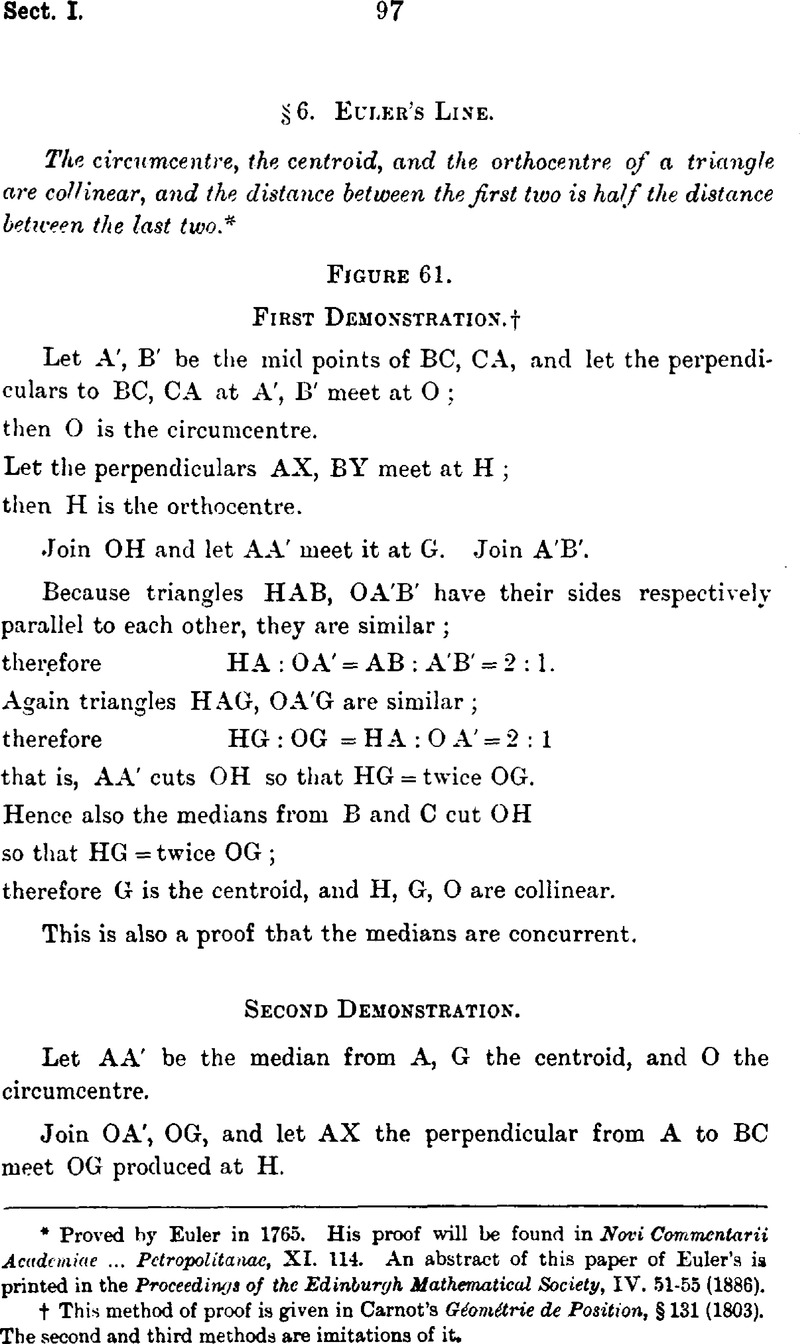No CrossRef data available.
Article contents
§6. Euler's line
Published online by Cambridge University Press: 20 January 2009
Abstract

- Type
- Other
- Information
- Copyright
- Copyright © Edinburgh Mathematical Society 1883
References
* Proved by Euler in 1765. His proof will be found in Novi Commcntarii Acadcmiac … Petropolitanac, XI. 114. An abstract of this paper of Euler'a is printed in the Proceedings of the Edinburgh Mathematical Society, IV. 51–55 (1886).
† This method of proof is given in Carnot's Géométrie de Position, § 131 (1803). The second and third methods are imitations of it.
* This mode of proof assumes only the first book of Euclid's Elements and its immediate consequences.
* The results (l)–(7) are given by Davies, T. S. in the Philosophical Magazine, II. 26–34 (1827)CrossRefGoogle Scholar. The concurrency of the first triad at the circumcentre of triangle I1I2I3, and the length of the radius, 2R, of that triangle were pointed out by Benjamin Bevan in Leybourn's Mathematical Repository, new series, I. 18 (pagination of questions), 143 (pagination of Part I.) in 1804. Compare the subscripts in the designations of the four I triangles with the subscripts of the radii which meet at their circumcentres.
* Crelle's, Journal, II. 287 (1827)Google Scholar, or Steiner's, Gesammdtc Werkc, I. 157 (1881)Google Scholar
† Lady's and Gentleman's Diary for 1863, p. 54.
† Journal de Mathématiques Spéciulis. 3rd series, III. 63 (1889Google Scholar;, and the memoir Sur les trianghs orthologiques read at the Limoges meeting (1890) of the Association Françaist pour l'avancement des Sciences.
* Proceedings of the Edinburgh Mathematical Society, XI. 19–57 (1893).Google Scholar
* Weddle, Thomas in the Lady's and Gentleman's Diary for 1840, p. 76.Google Scholar
* The last three are given by Mason, Rev. William of Normantou in the Lady's and Gentleman's Diary for 1863, p. 53.Google Scholar
† Constable, Mr S. in the Educational Times, XXXI. 113 (1878).Google Scholar
† Davies, T. S. in the Philosophical Mayazine, II. 32 (1827).Google Scholar
† Rev. Mason, William in the Lady's and Gentleman's Diary for 1863, p. 54.Google Scholar


